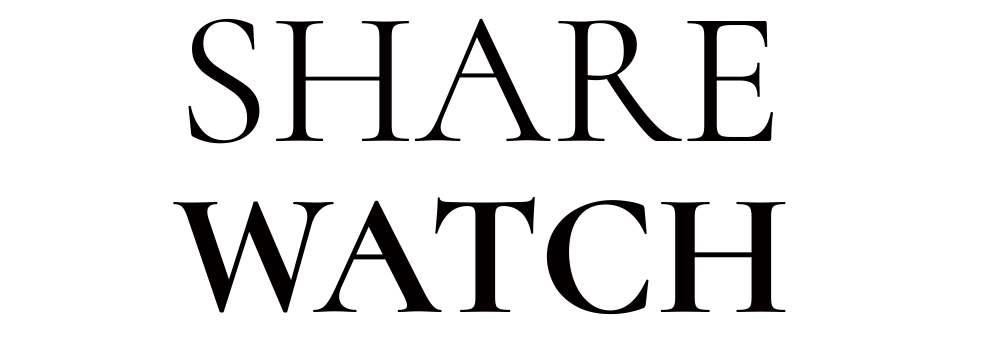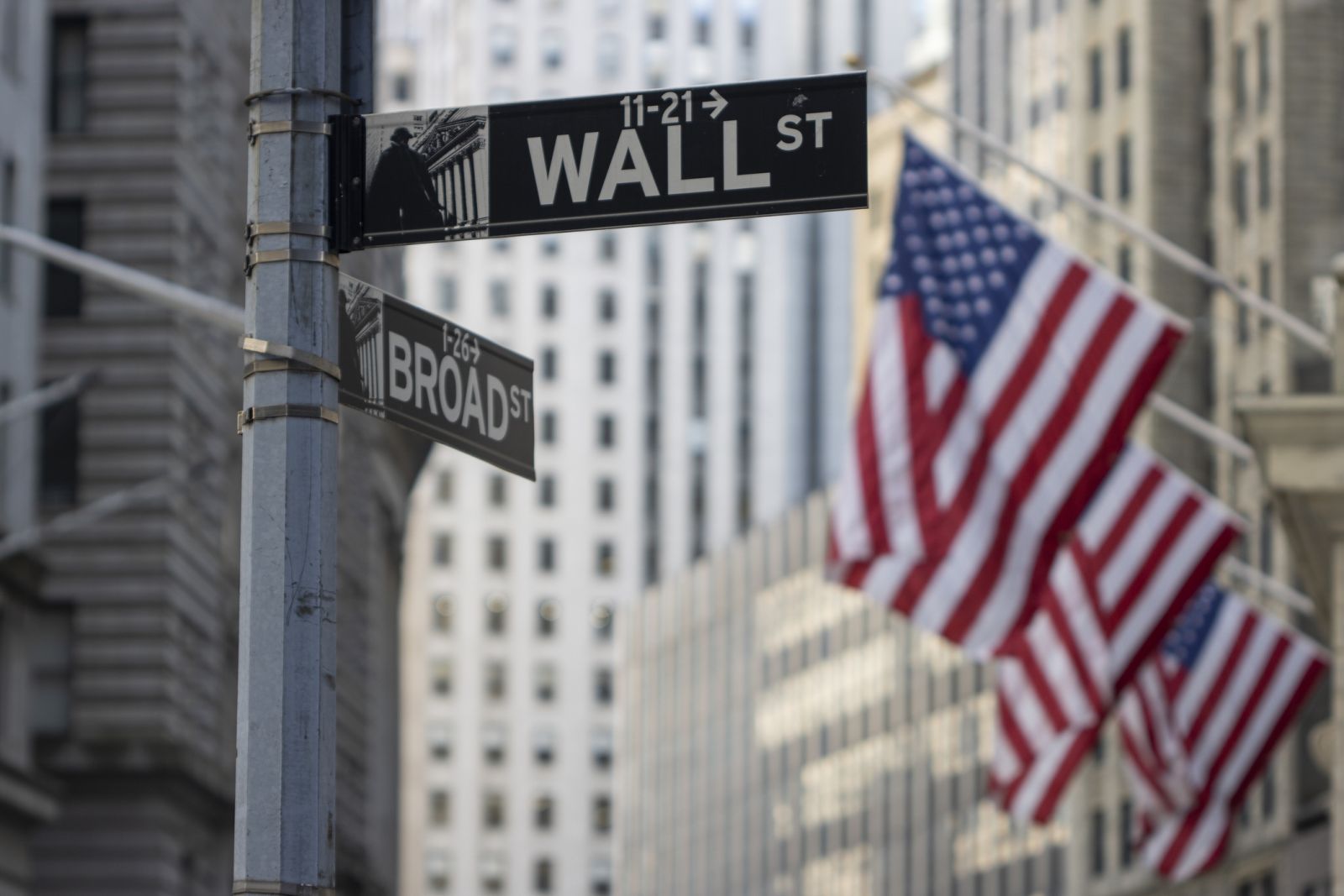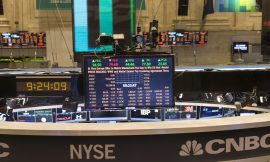The S&P 500 Index ($SPX) (SPY) on Wednesday rose +0.32%, the Dow Jones Industrials Index ($DOWI) (DIA) rose +1.04%, and the Nasdaq 100 Index ($IUXX) (QQQ) rose +0.04%. September E-mini S&P futures (ESU25) rose +0.32%, and September E-mini Nasdaq futures (NQU25) fell -0.01%.
The S&P 500 index and the Nasdaq 100 Index both posted new record highs on Wednesday before falling back. US stocks saw support from stronger expectations for interest rate cuts through year-end as Treasury Secretary Bessent weighed in with his call for a 150-175 bp rate cut. Stocks also saw support from Wednesday’s -5 bp decline in the 10-year T-note yield.
Join 200K+ Subscribers: Find out why the midday Barchart Brief newsletter is a must-read for thousands daily.
Treasury Secretary Scott Bessent on Wednesday said that interest rates are "too constrictive" and that rates "should probably be 150, 175 basis points lower." He added, "There's a very good chance of a 50 basis point cut. We could go into a series of rate cuts here, starting with a 50 basis point rate cut in September." The Fed is currently targeting the federal funds rate in the range of 4.25%-4.50% and the effective rate is currently at 4.33%.
The markets have started to think about the chances for a -50 basis point rate cut in September, based on Monday's largely benign CPI report and the fact that the US labor market is slowing, with average monthly payroll growth in May-July of only +35,000. On a year-on-year basis, Tuesday's July headline CPI of +2.7% y/y was slightly weaker than expected, but the core CPI of +3.1% y/y was slightly stronger than expected.
The federal funds futures market on Wednesday boosted the odds to 100% for a -25 bp rate cut in September and a slight 7% chance of a -50 bp rate cut. Those expectations were more dovish than the 96% chance for a -25 bp rate seen Tuesday and the 40% chance seen before the July payroll report was released on August 1. The federal funds futures market is currently discounting an overall -64 bp rate cut by the end of this year to 3.69%, and an overall -134 bp rate cut to 2.99% by the end of 2026.
The markets are awaiting this Friday's Trump-Putin summit in Alaska for any progress in ending the Russian-Ukrainian war. President Trump on Monday downplayed expectations of a breakthrough, saying the summit is a "feel-out meeting" to end the war in Ukraine. Also, recent comments from Ukrainian President Zelenskiy dampened hopes for a quick end to the war when he rejected any talk of Ukraine ceding territory to Russia.
In recent tariff news, President Trump early Tuesday extended the tariff truce with China for another 90 days until November. Last Wednesday, Mr. Trump announced that he will impose a 100% tariff on semiconductor imports. Still, companies would be eligible for exemptions if they demonstrate a commitment to building their products in the US. However, the US will levy a separate tax on imports of electronic products that employ semiconductors. Also, Mr. Trump announced last Wednesday that he will double tariffs on US imports from India to 50% from the current 25% tariff, due to India's purchases of Russian oil. Last Tuesday, Mr. Trump said that US tariffs on pharmaceutical imports would be announced "within the next week or so." According to Bloomberg Economics, the average US tariff will rise to 15.2% if rates are implemented as announced, up from 13.3% earlier, and significantly higher than the 2.3% in 2024 before the tariffs were announced.
The market's focus during the remainder of this week is on any tariff-trade news and Friday's Trump-Putin summit. On Thursday, weekly initial unemployment claims are expected to fall by -1,000 to 225,000. Also on Thursday, the July final-demand PPI is expected to increase to +2.5% y/y from +2.3% y/y in June, and the July PPI ex-food and energy is expected to rise to +2.9% y/y from +2.6% y/y in June. On Friday, July US retail sales are expected to climb +0.5% m/m and retail sales ex-autos are expected to rise +0.3% m/m. Also on Friday, July manufacturing production is expected to remain unchanged m/m. Finally, the University of Michigan's Aug US consumer sentiment index is expected to climb by +0.3 to 62.0.
Federal funds futures prices are discounting the chances for a -25 bp rate cut at 100% at the September 16-17 FOMC meeting and at 73% for a second -25 bp rate cut at the following meeting on October 28-29.
Earnings reports indicate that S&P 500 earnings for Q2 are on track to rise +9.1% y/y, much better than the pre-season expectations of +2.8% y/y and the most in four years, according to Bloomberg Intelligence. With over 82% of S&P 500 firms having reported Q2 earnings, about 82% of companies exceeded profit estimates.
Overseas stock markets closed higher on Wednesday. The Euro Stoxx 50 closed up +0.92%. China's Shanghai Composite rallied to a 3.75-year high and closed up +0.48%. Japan's Nikkei Stock 225 closed up +1.30% and posted a new record high.
Interest Rates
September 10-year T-notes (ZNU25) rose +12 ticks on Wednesday, and the 10-year T-note yield fell -5.2 bp to 4.237%. T-note prices rallied on stronger expectations for interest rate cuts through year-end. T-note prices had underlying support from Tuesday's CPI report, which was largely in line with market expectations and did not contain any nasty surprises. In a bullish factor, the 10-year breakeven inflation expectations rate on Wednesday fell -1.0 bp to 2.378%, adding to Tuesday's -1.3 bp decline.
European government bond yields moved lower. The 10-year German bund yield fell -6.4 bp to 2.680%. The 10-year UK gilt yield fell -3.7 bp to 4.589%.
Swaps are discounting the chances at 8% for a -25 bp rate cut by the ECB at the September 11 policy meeting.
US Stock Movers
The Magnificent Seven turned lower after initial gains, with only Apple (AAPL) and Amazon (AMZN) closing higher on the day, with gains of more than +1%.
Amazon.com (AMZN) closed +1.4% after announcing plans to expand its same-day grocery delivery service to 2,300 cities by year-end, more than doubling from the current 1,000 cities.
The Dow Jones Industrial Average outperformed the S&P 500 and Nasdaq 100 due to gains of more than +3% in UnitedHealth Group (UNH), Nike (NKE), Merck (MRK), and Sherwin-Williams (SHW).
Chip stocks continued to show strength due to expectations for interest rate cuts. AMD (AMD), NXP Semiconductors (NXPI), ON Semiconductors (ON), and Align Technologies (ALGN) all showed gains of more than +3%.
Crypto-firm Bullish (BLSH) raised $1.1 billion in an IPO on Tuesday, with its IPO price of $37 per share exceeding expectations. Bullish on Wednesday rallied sharply to close at $68.00.
CoreWeave (CRWV) plunged more than -20% after a disappointing earnings outlook tied to high capital costs and reduced margins.
Hanesbrands (HBI) rallied +3.7% Wednesday, adding to Tuesday's +28% rally that occurred after the Financial Times reported Canadian-based Gildan Activewear (GIL) would acquire Hanesbrands. The official acquisition announcement was made Wednesday, with an equity purchase amount of about $2.2 billion. Gildan rallied +11.8% Wednesday after Tuesday's -3.7% loss.
Palo Alto Networks (PANW) rose +0.8% on an upgrade by Deutsche Bank to buy from hold.
C3.ai Inc (AI) rallied +10% despite a downgrade by Oppenheimer to market perform from outperform following the company's recent preliminary earnings results that were considered weak.
KinderCare Learning (KLC) fell -22% after disappointing Q2 results, including weaker-than-expected enrollment numbers and a reduction in full-year guidance.
Earnings Reports (8/14/2025)
Deere & Co (DE), Amcor PLC (AMCR), Tapestry Inc (TPR), Applied Industrial Technologie (AIT), Birkenstock Holding Plc (BIRK), QXO Inc (QXO), Applied Materials Inc (AMAT), Sandisk Corp/DE (SNDK), Globant SA (GLOB), NU Holdings Ltd/Cayman Islands (NU).
On the date of publication, Rich Asplund did not have (either directly or indirectly) positions in any of the securities mentioned in this article. All information and data in this article is solely for informational purposes. For more information please view the Barchart Disclosure Policy here.
The views and opinions expressed herein are the views and opinions of the author and do not necessarily reflect those of Nasdaq, Inc.




